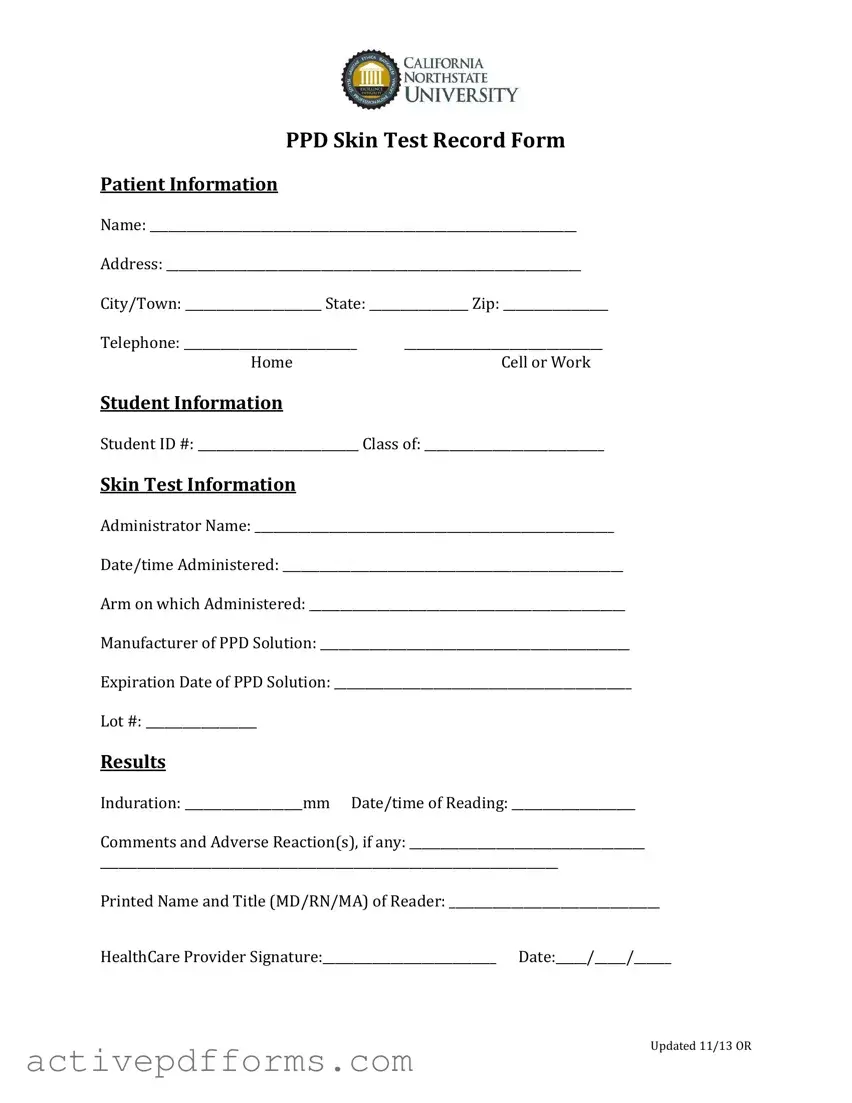Free Ppd Skin Test PDF Template
The PPD Skin Test Record Form serves as a vital document employed in tracking and documenting the administration and results of a tuberculin skin test, which is essential in identifying latent or active tuberculosis infections. It meticulously records patient and student information, alongside detailed data on the skin test administration, including the type and expiry date of the PPD solution used, the specific arm for administration, and the measured induration to assess the response. Additionally, it includes provisions for noting any adverse reactions and requires the signature of a healthcare provider to affirm the test's results.
Edit Ppd Skin Test Now

